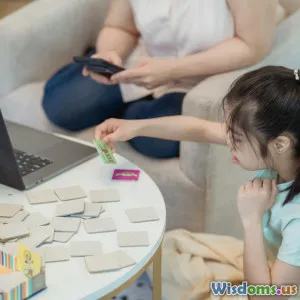
Why Cultural Competence is Vital for Today’s Educators
8 min read Explore why cultural competence is essential for educators to foster inclusive, effective learning environments today. (0 Reviews)
Why Cultural Competence is Vital for Today’s Educators
In our increasingly interconnected world, classrooms mirror the rich cultural diversity of society. This evolution presents both profound opportunities and pressing challenges for educators. At the heart of successfully navigating these complexities lies cultural competence—an educator’s ability to understand, communicate with, and effectively interact with students across cultures. But why is it so crucial in today’s educational landscape? This article delves into the essence of cultural competence, unpacking its importance and illustrating how it empowers educators to cultivate inclusive, dynamic, and equitable learning spaces.
Defining Cultural Competence in Education
Cultural competence refers to a set of behaviors, attitudes, and policies that enable educators to work effectively in cross-cultural situations. It involves self-awareness about one’s own cultural worldview, knowledge of different cultural practices and worldviews, and intercultural skills.
Educational psychologist Geneva Gay highlights cultural competence as the "ability to respond respectfully and effectively to the diverse cultural variables in the classroom." This competence transcends mere cultural awareness; it encompasses an active, critical understanding and appropriately adapting teaching methods.
Why is Cultural Competence Essential Today?
Reflecting Student Diversity
According to the National Center for Education Statistics, in U.S. public schools, more than 50% of students identify as belonging to racial or ethnic groups other than non-Hispanic White. Globally, classrooms are steadily becoming melting pots of ethnicity, language, and cultural norms.
Educators without cultural competence risk unintentionally alienating, miscommunicating, or misunderstanding their students. Conversely, culturally competent teachers build rapport, trust, and motivation, crucial components for deeper learning.
Bridging Achievement Gaps
Data from the U.S. Department of Education reveal persistent achievement gaps across racial and socioeconomic lines. Educators equipped with cultural competence have been shown to better understand and dismantle barriers faced by marginalized students. They are more adept at recognizing bias in curriculum, assessment, and disciplinary methods.
For instance, a 2016 study published in the Journal of Urban Education reported that culturally responsive pedagogy correlated with improved academic outcomes for students of color. By incorporating students’ cultural backgrounds into learning contexts, educators boost engagement and pride.
Cultivating an Inclusive Classroom Climate
Students are not simply learners of content; they are individuals shaped by cultural values and experiences. A culturally competent educator respects and validates these differences, promoting psychological safety where students feel valued and free from stereotype threat.
Consider the example of welcoming diverse holidays, including multilingual materials, or actively involving families from different backgrounds. Such approaches communicate respect and foster inclusivity, which research links to enhanced social-emotional learning and reduced behavioral challenges.
Developing Global Citizens
Education today aims not only to impart knowledge but to prepare students for a globalized world. Cultural competence in educators models open-mindedness and cross-cultural communication skills for their students—qualities essential in any 21st-century career.
As noted by former U.S. Secretary of Education Arne Duncan, "Learning about other cultures and languages produces students who are not only smarter but also more empathetic and prepared for diverse workplaces."
Building Cultural Competence: Practical Strategies
Self-Reflection and Bias Awareness
Educators must begin with introspection, acknowledging personal biases and their potential impact. Tools like the Implicit Association Test (IAT) help uncover subconscious prejudices.
Continuous Learning
Cultural competence is not a static skill. Attending workshops, reading culturally relevant literature, and engaging in community immersion deepen understanding.
Differentiated Instruction
Tailoring teaching strategies to accommodate diverse learning styles, languages, and cultural contexts—such as using stories or examples relatable to students’ lives—strengthens comprehension and participation.
Family and Community Engagement
Building strong bridges with families respects cultural values while allowing educators to gather insights for student support. Schools implementing community-based participatory programs report gains in attendance, behavior, and academic performance.
Inclusive Curriculum Design
Integrating multicultural content across all subjects prevents marginalization and fosters respect. For example, highlighting scientific contributions from various cultures counters the dominance of Western-centric narratives.
Success Stories in Cultural Competence
Take the example of a Detroit middle school that adopted culturally responsive teaching practices. By incorporating African American literature and history into the curriculum and encouraging students to share their cultural backgrounds, the school improved reading levels by 20% over two years while reducing suspensions by nearly 30%.
Similarly, a Canadian elementary school trained teachers in Indigenous cultural competence, which increased Indigenous student attendance and significantly improved their sense of belonging.
Overcoming Challenges
Despite clear benefits, integrating cultural competence can be challenging due to systemic inertia, limited resources, and varying educator readiness. However, leadership commitment and ongoing professional development are keys to instituting lasting change.
Conclusion
Cultural competence is no longer an optional skill but a fundamental pillar for effective teaching in today’s diverse classrooms. By fostering understanding, respect, and inclusion, culturally competent educators create environments where every student can thrive. As classrooms continue to reflect global diversity, investing in cultural competence not only addresses equity and academic success but shapes empathetic citizens ready to contribute in a multicultural world.
Remember, the journey towards cultural competence is ongoing, reflective, and rewarding—embrace it to unlock the immense potential in every learner.
References
- Gay, G. (2018). Culturally Responsive Teaching: Theory, Research, and Practice. Teachers College Press.
- U.S. Department of Education, National Center for Education Statistics. (2023). The Condition of Education.
- Ladson-Billings, G. (1995). Culturally relevant pedagogy. American Educational Research Journal, 32(3), 465–491.
- Duncan, A. (2012). Remarks on preparing students for a global economy. U.S. Department of Education.
- Journal of Urban Education, (2016). "Impact of culturally responsive pedagogy on student achievement."
Rate the Post
User Reviews
Popular Posts





















